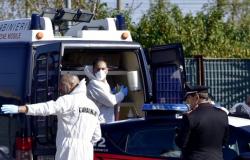by Camilla Mondini
The celebratory initiatives in honor of the 78th anniversary of the Italian Republic started on June 2nd. On 2 June 1946, Italy definitively freed itself from the aftermath of the fascist dictatorship and experienced free elections which culminated in universal male and female suffrage with Italians choosing the republican form of state.
The celebrations began at 9.30 am in front of the Victory Tower with the formation of the joint armed picket and deployment, with representation of the fighting and military associations. The authorities then took their places in Piazza Cattedrale to witness, together with the large audience, the Honors to the highest Authority and Flag Raising, all accompanied by the Italian Anthem performed by the Cona band.
The prefect of Ferrara Massimo Marchesiello read the speech of the President of the Republic “in 1946 the choice of the Italian people laid the foundations for a renewed social pact which would find complete articulation in the constitutional pact. Remembering is a fundamental exercise for every citizen, especially for those who exercise public functions. Citizens and above all those who exercise public functions find in the values of freedom and democracy a compass to face the complex challenges of the present”.
Then, with the tricolor sash around his neck representing the mayor Alan Fabbri, the speech of the councilor Marco Gulinelli: “One year ago, a few days after the terrible flood in Romagna, the Republic Day meant: spirit of service and help others to get out of the emergency. In just a year, a lot has changed. At a global level, as well as at a local level.”
In the words of the councilor there is also a message of solidarity with the victims of the war in the Middle East: “Ferrara lives with apprehension the drama that is being experienced in the lands of Israel and Palestine, and strongly repudiates the war. We know that ours is a city steeped in Jewish culture. Guardian of its Renaissance, Ferrara is by its nature favorable to civil and social integration, it is open to all religions and different cultures. Here stands the MEIS (Museum of Judaism in Italy and the Shoah) which for years, with the creation of beautiful and important exhibitions, has been carrying out a research path on the presence of Jews in Italy, which is decisive for the very formation of identity Italian”.
The universal male and female suffrage of ’46 certainly marked a step forward in the history of female emancipation but, as councilor Gulinelli underlines, “there is still a lot to do on gender equality”. And, while he thinks about “how far there is still to go for concrete and effective gender equality, my mind and my soul are marked by the faces and stories, all dramatically similar, of those women who fill every day newspapers and television. In 2024 there will be 17 victims of femicide in our nation. They are women torn from their existence for having said enough to the abuses of a toxic bond and for having chosen love towards themselves, towards life”.
“Today – he adds -, we also retrace the conditions that made the birth of the Republic possible, after decades of dictatorship, destruction and abuse. A few days ago, in the Chamber of Deputies, Giacomo Matteotti was remembered on the centenary of his assassination at the hands of fascists. His seat will never be occupied again, in future memory. Italy is based on the sacrifice and commitment of women and men who, like Matteotti, believed, often at the cost of their lives, in a free and democratic country.”
In concluding, Gulinelli does not give up a lunge at the opposition: “We must tone down a policy that is increasingly only denigrating. A policy aimed at offense, rather than proposals.”
The ceremony then ended with the flag-waving by the Torre della Vittoria Fire Brigade.





